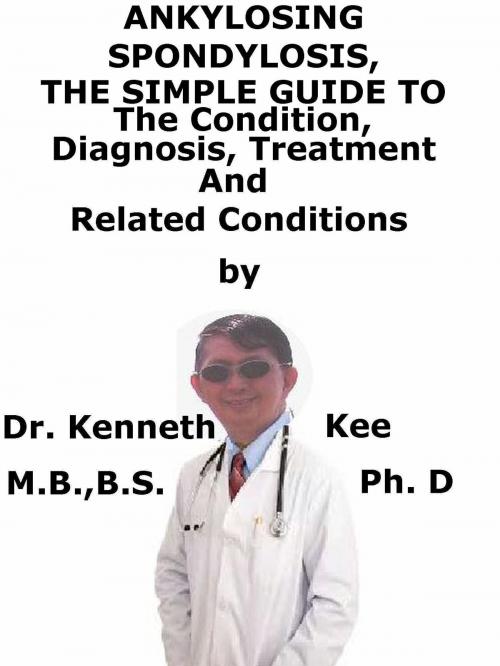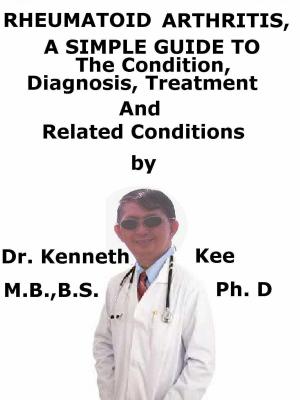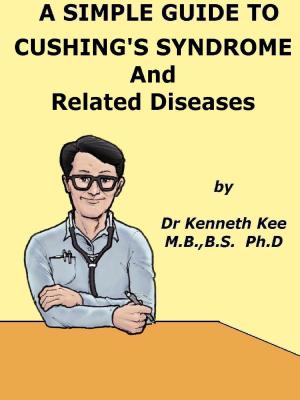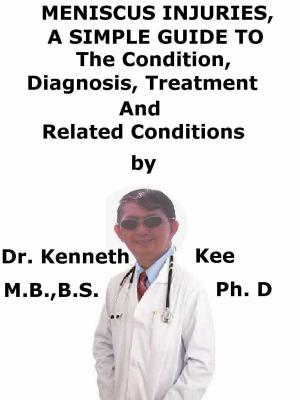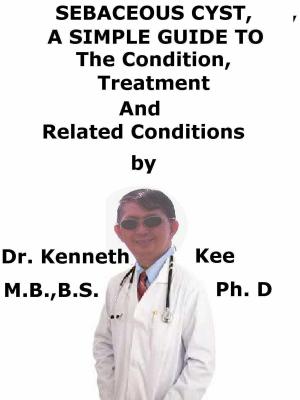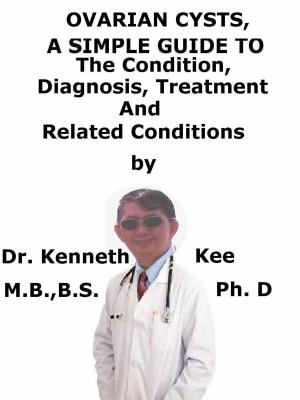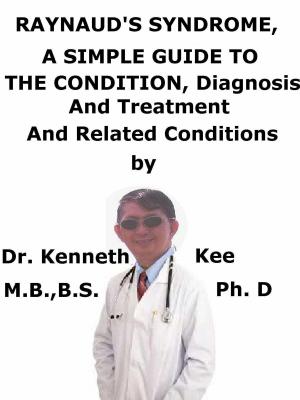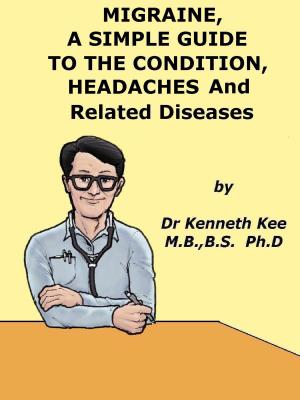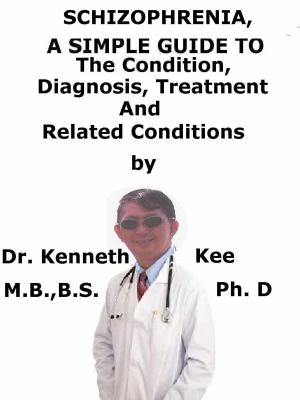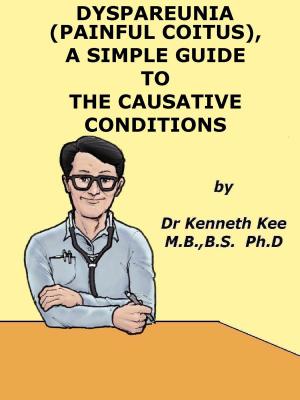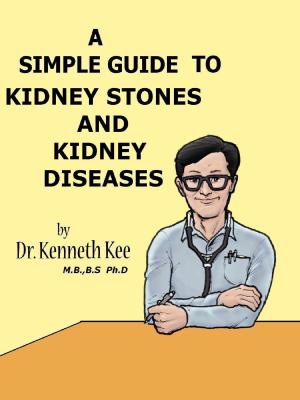Ankylosing Spondylitis, A Simple Guide To The Condition, Diagnosis, Treatment And Related Conditions
Nonfiction, Health & Well Being, Health, Ailments & Diseases, Musculoskeletal, Medical, Specialties, Orthopedics| Author: | Kenneth Kee | ISBN: | 9781370366903 |
| Publisher: | Kenneth Kee | Publication: | October 7, 2016 |
| Imprint: | Smashwords Edition | Language: | English |
| Author: | Kenneth Kee |
| ISBN: | 9781370366903 |
| Publisher: | Kenneth Kee |
| Publication: | October 7, 2016 |
| Imprint: | Smashwords Edition |
| Language: | English |
Ankylosing Spondylitis is a chronic medical inflammatory disorder of the joints of the spine manifested by fusion (ankylosing) and inflammation (spondylitis) of some or all of the joints and bones of the spine.
It is a painful progressive disease involving mainly the spine.
It can also induce inflammation of the joints between the spinal bones and the joints between the pelvis and spine.
These joints become inflamed and fused.
Over time the affected spinal bones join together.
It can involve also other areas such as eyes, bowels, lungs, and heart.
Every person can get Ankylosing Spondylitis.
The age of start is normally in the late teens or early 20's.
The disorder most often starts between ages 20 and 40 but it may occur before age 10.
It is also more common in men than women about 3:1.
In men the spine and pelvis are most affected.
In women the pelvis, hips, knees, wrists and ankles are more frequent.
The cause is not known but involves the interaction of genetic and environmental factors.
Inflammation happens at the insertions of the ligaments and tendons to the bone.
The erosion of the bones happens at the site.
When the inflammation subsides, new bone forms and replaces the elastic tissues of the ligaments or tendons.
It is sometimes called bamboo spine.
This normally begins in the vertebra of the spine then involves the pelvis, then goes towards to the chest wall and neck.
Symptoms may be slight in early stages or mild disorder, with an insidious onset over several months to years.
The onset is usually gradual with occasional back pain over weeks or months.
The disease starts with low back pain that keeps recurring.
Stiffness and pain are worse at night, in the morning or when the patient is not active.
There is often a feeling of tenderness of the sacroiliac joints or a limited range of spinal motion.
Chest expansion can become limited because the joints between the ribs become stiff.
Sometimes peripheral joints such as shoulders and hips are affected.
Some may be very mild needing only exercises or mild pain killers.
Others may be more serious needing strong NSAIDS or RA medicines such as sulphasalazine
Various medicines are given to reduce swelling and suppress the immune system.
a. Corticosteroid therapy such as prednisone
b. Methotrexate (taken once a week)
c. TNF-inhibitors
Surgical treatment may be performed if pain or joint injury is serious.
AS is a chronic disorder for which there is presently no cure.
TABLE OF CONTENT
Introduction
Chapter 1 Ankylosing Spondylitis
Chapter 2 Causes
Chapter 3 Symptoms
Chapter 4 Diagnosis
Chapter 5 Treatment
Chapter 6 Prognosis
Chapter 7 Spinal Stenosis
Chapter 8 Back Pain
Epilogue
Ankylosing Spondylitis is a chronic medical inflammatory disorder of the joints of the spine manifested by fusion (ankylosing) and inflammation (spondylitis) of some or all of the joints and bones of the spine.
It is a painful progressive disease involving mainly the spine.
It can also induce inflammation of the joints between the spinal bones and the joints between the pelvis and spine.
These joints become inflamed and fused.
Over time the affected spinal bones join together.
It can involve also other areas such as eyes, bowels, lungs, and heart.
Every person can get Ankylosing Spondylitis.
The age of start is normally in the late teens or early 20's.
The disorder most often starts between ages 20 and 40 but it may occur before age 10.
It is also more common in men than women about 3:1.
In men the spine and pelvis are most affected.
In women the pelvis, hips, knees, wrists and ankles are more frequent.
The cause is not known but involves the interaction of genetic and environmental factors.
Inflammation happens at the insertions of the ligaments and tendons to the bone.
The erosion of the bones happens at the site.
When the inflammation subsides, new bone forms and replaces the elastic tissues of the ligaments or tendons.
It is sometimes called bamboo spine.
This normally begins in the vertebra of the spine then involves the pelvis, then goes towards to the chest wall and neck.
Symptoms may be slight in early stages or mild disorder, with an insidious onset over several months to years.
The onset is usually gradual with occasional back pain over weeks or months.
The disease starts with low back pain that keeps recurring.
Stiffness and pain are worse at night, in the morning or when the patient is not active.
There is often a feeling of tenderness of the sacroiliac joints or a limited range of spinal motion.
Chest expansion can become limited because the joints between the ribs become stiff.
Sometimes peripheral joints such as shoulders and hips are affected.
Some may be very mild needing only exercises or mild pain killers.
Others may be more serious needing strong NSAIDS or RA medicines such as sulphasalazine
Various medicines are given to reduce swelling and suppress the immune system.
a. Corticosteroid therapy such as prednisone
b. Methotrexate (taken once a week)
c. TNF-inhibitors
Surgical treatment may be performed if pain or joint injury is serious.
AS is a chronic disorder for which there is presently no cure.
TABLE OF CONTENT
Introduction
Chapter 1 Ankylosing Spondylitis
Chapter 2 Causes
Chapter 3 Symptoms
Chapter 4 Diagnosis
Chapter 5 Treatment
Chapter 6 Prognosis
Chapter 7 Spinal Stenosis
Chapter 8 Back Pain
Epilogue
